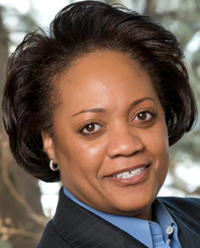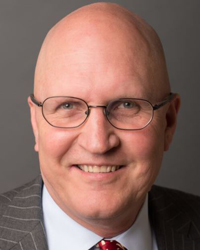Will Disruptive Innovations Enhance Patient Outcomes?

By Ed Miseta, Chief Editor, Clinical Leader

Disruptive innovation is a hot topic in clinical trials. So is patient centricity. While some innovations will help sponsors more effectively manage the drug development process, some are also poised to have a significant impact on patients taking part in studies.
In order to determine how these changes will affect clinical trials, as well as the patient experience, I brought together two experts on the topic: Melva Covington, senior director and strategy lead for Sanofi, and Ross Weaver, managing director for Clinical SCORE. In this Q&A article they discuss innovation in trials, as well as diversity, risk aversion, and mobile technologies.
Ed Miseta: Can you tell me about your current position and why it’s important to clinical research?
 Melva Covington: My current role is senior director, strategy lead for Sanofi. I have worked in various roles within the Sanofi organization over the past five years, mostly in the area of Global R&D (health economics and outcomes research, translational medicine and patient centered clinical trial recruitment and retention). I have been in my current role for eight months and it enables me to think and engage more strategically with field medical teams on a global basis. Specifically, I focus on building strategies around customer engagement for medical colleagues who directly interface with stakeholders to communicate scientific information in the area of diabetes and cardiovascular disease. In addition, we are interested in understanding how innovative technologies and tools can be used to enhance our engagement with customers. The focus is clearly on understanding and tailoring what we do to better meet the needs of our patients, health care providers and institutions.
Melva Covington: My current role is senior director, strategy lead for Sanofi. I have worked in various roles within the Sanofi organization over the past five years, mostly in the area of Global R&D (health economics and outcomes research, translational medicine and patient centered clinical trial recruitment and retention). I have been in my current role for eight months and it enables me to think and engage more strategically with field medical teams on a global basis. Specifically, I focus on building strategies around customer engagement for medical colleagues who directly interface with stakeholders to communicate scientific information in the area of diabetes and cardiovascular disease. In addition, we are interested in understanding how innovative technologies and tools can be used to enhance our engagement with customers. The focus is clearly on understanding and tailoring what we do to better meet the needs of our patients, health care providers and institutions.
Specifically, I have the opportunity to work closely with talented medical professionals, such as clinical liaisons and health outcomes scientists, to develop strategies and build innovative tools for customer engagement and communication. This is informed by using critical thinking and strategic planning techniques to understand the dynamic changes occurring in the healthcare environment and how that impacts the relationships that we build. We want to better understand and be responsive to uncertainties and shifts in the healthcare industry and communities, and how these changes influence the way people think about their health and the choices they make. This is critical in our efforts to bring needed medicines to people so that they can get and stay well.
 Ross Weaver: As the managing director for Clinical SCORE, I provide benchmarking solutions for drug development, and focus on accelerating clinical trials through providing a 3rd party assessment of issues the impede clinical trials. I also have prior experience with pharma via time spent at AstraZeneca as director of licensing, director of new products planning, and manager of new products marketing research. I also served as senior scientist, Division of Drugs, at the American Medical Association.
Ross Weaver: As the managing director for Clinical SCORE, I provide benchmarking solutions for drug development, and focus on accelerating clinical trials through providing a 3rd party assessment of issues the impede clinical trials. I also have prior experience with pharma via time spent at AstraZeneca as director of licensing, director of new products planning, and manager of new products marketing research. I also served as senior scientist, Division of Drugs, at the American Medical Association.
Miseta: Clinical research is no walk in the park, especially when it comes to having to step into the shoes of the patient. In your role as a patient advocate, how do you convey the importance of patient empathy during trial design and execution?
Covington: You are quite correct! Having to deal with and manage a health condition can be life changing for a patient, their family, and loves ones. It should never be taken lightly or treated as routine. Therefore, great care is given when considering the impact of a drug being developed, service rendered or technology used in this capacity.
Relative to clinical trial design, we have processes in place to ensure that patient or advocacy input is integrated into every step of the drug development process, beginning as early as the pre-clinical stage or when examining the mechanism of action. By the time we get to designing and conducting a clinical trial, we have familiarity with the views of patients, and relationships have been established by a clinical development team. These teams are thinking about the impact of treatment and clinical trial protocols on patient experiences and outcomes. We strive to have patients as partners throughout the process. This is how I advocate for patients, especially as they live and operate in the diverse communities.
Weaver: Melva is exactly right. Patients are simply people with a medical condition, living their lives as best they can. When they consent to be in a clinical trial, they are giving something very precious to the industry – their time, energy, and willingness to try something that has not been fully proven. We honor that by learning all we can from them. Everyone in the industry, including sponsors, CROs, sites, and physicians, have to really focus on listening to patients. At my company, part of that focus is working hard to give them a voice in the trial design process. Their voice provides great value to current and future studies, and listening intently to them is the best way we have of conveying empathy. This is something we all need to take very seriously.
Miseta: The FDA currently has mandates that encourage sponsors to enhance diversity in clinical trials. Can you tell me about what you’re doing to support these mandates?
Covington: Clinical trial diversity is a top priority for Sanofi, and we are fully supportive of the FDA objectives to increase the presence of under-represented groups in clinical trials and outcome research. In 2013, I wrote a blog titled “Diversity in Clinical Trials and Why it Matters.” It highlights the importance of diverse representation in clinical research and partnering with organizations committed to this cause.
People from under-represented racial and cultural backgrounds are largely not effectively targeted by trial recruiters for studies. Recruiting for clinical trials is in itself a challenging task, particularly in an era of more targeted therapeutics with more precise inclusion and exclusion criteria. However, the results in many cases are generalized and applied to the larger population without the examination of data based on the prevalence of occurrence in the real world. It is important that we understand these unmet medical needs and how to measure outcome across diverse patient populations as we bring new treatments, medicines, vaccines or devices to market.
At Sanofi, we seek to offer healthcare solutions in areas such as cardiovascular disease, diabetes, multiple sclerosis, rare disease and oncology. Being able to serve patients from diverse, targeted populations as partners of choice in our clinical research is one goal on which we are clearly focused.
In addition, my life’s work in the area of population health research, advocacy, public speaking and community-based empowerment is a testament to a deep rooted, personal commitment to raising awareness of diversity and approaches to combat challenges strategically.
Weaver: I would just add that some studies have shown significant differences in efficacy related to race. For a new product, unless studies include diverse populations, it is not possible to properly document efficacy and safety. In addition, people with diverse backgrounds will experience medications differently, and derive different benefits. We are just beginning to realize how different these experiences can be, and how every patient perspective is equally important.
Miseta: Can you tell me about some of the disruptive initiatives that you’re working on and why they are important?
Weaver: After decades of focusing primarily on the needs of physicians, the industry has finally shifted back to its beginnings, which is focusing on the needs of patients. The reasons for the shift are multifactorial, including the changing commercialization model and genomics resulting in personalized medicine for rare diseases. Regardless of the reason, patients will benefit from this shift, as future studies will focus more on their needs.
Covington: I can speak about the disruptive initiatives in the healthcare industry that impact the way that I think about my work. I am interested in the examination of the presence, frequency and patterns of health outcomes across patient populations. Critical to this is an understanding of health care choices made by patients, healthcare providers and systems that support this exchange. So when you speak about disruption of any kind, the impact on how this impacts the patient and system of care should not be taken lightly. But the discussion is important because of the increasing demands placed on the healthcare system and opportunities presented that stimulate change in the environment.
There are a number of disruptive initiatives in health care that are worth mentioning briefly:
- Personalized Medicine and reducing of disparities in health outcomes
- Telemedicine and more affordable access to specialists
- Artificial Intelligence and concordance in chronic care self-management
- Rapid fire patient recruitment and engagement in clinical trials through Cloud Technology
- Entrants into the healthcare market by players outside the industry that are making a big splash and changing the engagement paradigm through the use of mobile communications wearable devices
This impacts my work because it is important to know ways in which these technologies are used and how medical teams within pharma can partner with providers and organizations interested in using these innovations to improve the outcomes and lives patients. This impacts the well-being of families and communities. I go back to the World Health Organizations definition of health as not simply the absence of disease, but complete physical, mental and social well-being.
There are so many new innovations that use technologies and data platforms to increase patient knowledge, facilitate engagement and provide greater access to personalized information for patients and other decision-makers. The goal of these tools is to be “value” driven, that is to improve the quality of health outcomes and help patients/providers as they engage in increasingly complex systems of care.
Miseta: It is widely known that the field of clinical research exhibits levels of risk aversion when it comes to innovation. How do you overcome this challenge, while maintaining a collaborative environment that supports change?
Covington: That’s a great question. I find it helpful to build a roadmap or strategic plan of where I am trying to go. That plan will include available resources, processes of effective communication, and a vision of what good, or great, actually looks like.
I am reminded of the words of Tao Te Ching (translation by Stephen Mitchell), "A good traveler has no fixed plans and is not intent on arriving. A good artist lets intuition lead wherever it wants. A good scientist's mind is free of concepts and is open to what is." My grandmother said it like this: “I believe I’ll run on and see what the end’s going to be.” In any case, we have to embrace the challenges of change, trust in our instincts, and do all that we can to be authentic in how we engage with others.
Weaver: I really like that quote about the traveler. Yes, clinical research is inherently risky and incredibly expensive. Because of that, it is natural for sponsors to be averse in adding unnecessary risk to clinical trial management. On the other hand, the costs of trials have escalated to where they provide unacceptably low returns on investment to sponsors. Therefore, clinical teams need to identify how to decrease the costs of trials while avoiding adding significant risks. I believe there are proven methods used in other industries that should be applied to clinical research, including but not limited to conducting ‘market research’ to isolate issues hindering completion of clinical trials.
Miseta: What is a good way to leverage internal communications to spread the message about innovative pilots?
Covington: I try to leverage communication and build partnerships throughout the interaction process. Once a project has been completed, stakeholders are already familiar with what you were trying to achieve. Many in my target audience are also my collaborators in building the projects or research. I rely on them for advice and support as it is developed and implemented. The communication is then leveraged by the people who have built it and have ownership in the process and outcomes. This is also a critical aspect to sustaining the impact of a project over time in that it can more easily be imbedded into practical applications through this type of ownership.
Weaver: There are two common ways I see innovation being distributed throughout an organization. The first is a program director pilots an initiative for a study, with an innovation director participating as a team member. The second is having a senior executive buy into a pilot and push it down into the organization. What doesn’t work well is having an innovation team trying to force a team to pilot an innovation. Part of my work involves specializing in uncovering clinical trial challenges by listening to research sites, and then generating useful insights that help study teams diagnose and act on these challenges.
Miseta: Can you tell me about why it’s important to listen to study sites, and the importance of generating insights about patients from study sites?
Covington: It is important to listen to study sites because they are our partners in the research process. This represents the ground level of bring an innovative study or protocol to study volunteers in an efforts to find solutions to challenges health care conditions. These are people and organizations that are also close to patients and their caregivers. We must listen and understand the challenges as well as the opportunities to educate; both are important.
At Sanofi, we strive to be the partner of choice in clinical research. A key aspect of this is in our ability to listen and understand the environment around us and operating collaboratively. Success does not mean being the smartest guy in the room, but the most effective listener so that one can better empathize with the needs and perspectives of others. In the end, this is our most valuable asset. We need to listen to critical insight and interpret the data so as to build sound strategies for action and engagement. This partnership with sites enables us to do this effective as we strive to conduct research and talk about the results.
Weaver: Study sites are a major determinant of whether a study delivers on time or is late. They can make your trial the highest or lowest priority, and you will never know ahead of time. Sites might have a problem with data collection, post-amendment training, equipment, or customer service. This problem might not be visible to the investigator, but could cause study coordinators to not consent patients who are eligible candidates, or not follow-up on a potential study subject. Not listening to study coordinators might also make them feel like you don’t care about them, which makes them less likely to care about your study. Only by flipping your orientation from top-down to bottom-up can you discover issues that hinder patient recruitment and enrollment and address them.
When it comes to patients, they generally want to do their best to help the study. Only patients have the experience of being recruited to participate, consenting, completing the ePRO, undergoing the procedures, completing all the necessary tasks, and attending all of the visits. Only by gaining insights from patients involved in clinical trials can you better refine the design of your next phase of trials.
